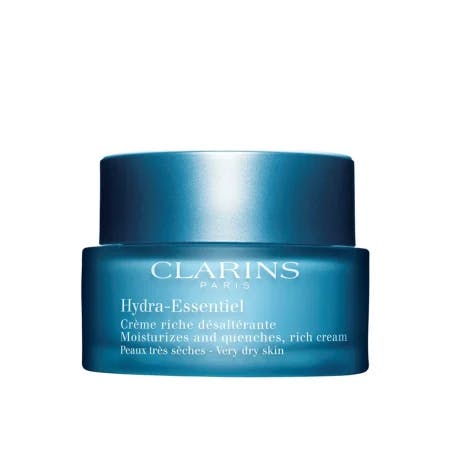Your Guide To Exercising Outside In Winter
7 minutes read
Once the nights start to draw in, the lure of cosy nights on the sofa far outweighs any desire to exercise in the cold. Even the keenest fitness fanatics would probably admit that their enthusiasm for exercise wanes as the mercury drops. But, getting outside and engaging in a burst of physical activity is vital for our health and wellbeing. Studies have shown that exercise in cold climates can be highly beneficial. So read on to find everything you need to know about working out in cold weather.

Why it’s important to exercise in cold weather
Unsurprisingly, research has shown that people exercise for an average of 8 minutes less when the chill starts to set in. So what do we occupy our saved minutes with? Well, perhaps even less surprisingly, sitting and sleeping. It’s certainly not uncommon to feel more lethargic as we approach winter. Vitamin D has been proven to boost energy, and during the colder months, we have far less exposure to it. Plus, sufferers of Seasonal Affective Disorder find it extremely difficult to find motivation this time of year. All a recipe for placing exercise on the back burner until spring.
But while enthusiasm might be low, the rewards are there for the reaping. The NHS recommends at least 150 minutes of physical activity per week to stay healthy. People who exercise regularly can reduce their risk of developing heart disease, diabetes, and cancer. Plus, research has also shown that a burst of physical activity can positively affect your mood and self-esteem and reduce the risk of depression. Not forgetting, it can also help to alleviate insomnia — all the fresh air makes you sleep more soundly too.
Cabin fever during winter can also set in — remember lockdown? Well, that little outside time was a life saviour for many.
But why is it important to get outside? We all know that a burst of fresh air is good for us; one study found that residents who spent more time outside reported better mental health. Better yet, tackling a workout outside will leave you more revitalised, energised, and optimistic. Research has demonstrated that people who exercise outdoors throughout the year are more motivated by enjoyment, challenge, and competition. Plus, you’re more likely to be committed to a regular exercise regime if you work out all year round.
Jogging in winter
Jogging, while not for everybody, has some undeniable benefits. It’s free; simply don a pair of trainers and take off. It’s versatile; you can take a different route every day. And it’s flexible. For many people, it’s much easier to slot a run into your daily routine than trying to schedule a gym class. Plus, the cost of living crisis means your gym pass might have to be put on hold.
Also, when running in winter, your body has to work harder to keep warm, meaning that you burn more calories. According to Harvard University, exercising in the cold can also improve your endurance, which is vital for any budding runner.
But, when running during winter, there are some safety issues you need to take seriously. Firstly, you need to adapt your workout wardrobe, and it’s advisable to dress in layers that you can easily don or shed. Dressing too warmly will mean the heat your body generates becomes trapped within the layers of your clothes, making you too hot. Meanwhile, sweat will pull this heat from your body, leaving you chilly. Layers solve this issue; materials such as polypropylene for your first layer will draw sweat away from your skin.
- Brands like Lulumon have Silverescent™ technology, powered by X-STATIC®, that also inhibits the growth of odour-causing bacteria on the fabric.
- Follow with a fleece or wool layer, and lastly, something waterproof and breathable.
- Cold muscles are also more susceptible to injury, so make sure you do a complete warm-up before heading out. Adopt a pre-workout routine, including arm circles and wings, high steps, and lunges to get the blood flowing. When the weather takes a turn, pavements can often be icy and uneven, so pay attention to your steps and choose footwear with traction. Wear bright clothes to be visible and check weather conditions before you set out, including the wind chill.
Read next: 7 Expert-Backed Ways to Boost Your Metabolism
Cycling in winter
Cycling can be a hobby, a fitness regimen or simple an eco-way of getting from a-to-b. It’s a fantastic cardio workout that doesn’t put your knees and joints under the same pressure as running. It’s also great for your mental health and cognitive function.
But much like running, there are some modifications you must undertake in winter to keep you safe. When the roads are wet and icy, be aware that your tyre grip may not function as you are used to. The Met Office advises that when breaking, you must allow for greater stopping distances and apply brakes smoothly, wherever you can choose routes that don’t have a lot of motor traffic. If it’s dark outside, wear reflective clothing and have headlights and taillights on your bike so you can be seen by traffic and pedestrians and illuminate your pathway. Finally, invest in a head cap and overshoes to keep you warm and dry, whatever the weather.
Once again, you should begin your warm-up before you get anywhere near the saddle, as it’ll be tricky to get toasty on the bike. So have a nice hot drink and a speedy turn around the house before setting off. And whenever exercising in winter, or when it’s dark, tell a friend or loved one where you are going and when to expect you back. Then, if you feel comfortable, turn on your location settings so a friend can track you.
Working out in cold weather
Protect your extremities
When you’re cold, your blood flow concentrates in your body’s core, leaving fingers, toes, ears, etc. susceptible to a chill. To remedy this, wear a hat or headband and gloves, plus thick socks for your feet in wool or a synthetic-sweat-wicking fabric to help keep moisture away from your skin. If your toes are a cause of concern, consider shoe covers which will allow running shoes to retain heat. Or buy shoes a half size too large so you can comfortably wear thick thermal socks.
Stay hydrated
Drinking plenty of water isn’t solely for summertime; winter air is very drying, so even if you’re not thirsty, have some water or a sports drink before, during and after your workout, and pay attention to when you feel thirsty. Breathing in dry, cold air and sweating can leave you dehydrated. Instead, keep your skin nice and moist with a thick moisturiser, such as Clarins Hydra-Essential Rich Cream. And Vaseline works a treat at keeping biting air away from sensitive spots like your ears and nose.

Wear sunscreen
Easy to forget, but it’s perfectly possible to get sunburnt in Winter, especially if you’re out in the elements. Wear sunscreen that will block UVA and UVB rays, and don’t forget an SPF lip balm to prevent your lips from succumbing. Wear dark glasses to protect your eyes from the sun and wind.
Get motivated
You could be forgiven for not chomping at the bit regarding winter workouts. Motivation can be hard to come by when frost is at home in your front garden. Give yourself a boost with a fitness band that will allow you to track your activity and set your goals. Or download an App on your phone, such as the hugely popular Couch to 5K, to get you started.
Stay Safe
The Mayo Clinic advise that exercise is safe for almost everyone, even when the temperature has cooled off. But do remember that if you have a condition like asthma or issues with your heart, you should always check in with your doctor.
Get yourself clued up on the symptoms of frostbite and hypothermia so you can look after yourself and others when exercising in cold weather. Always tell someone when you’re going out, and if you’re concerned about going alone, enlist a friend to tackle the track with or join a fun run.
FAQs
Is it good to exercise in winter?
There are lots of benefits to exercising outside in the cold. It can increase our stamina, boost our mood, and help burn fat.
Why is it hard to exercise in winter?
In winter, our exposure to Vitamin D significantly drops, affecting our energy levels and, therefore, our motivation to work out. Plus, cold muscles are more susceptible to injury.
Does cold weather affect jogging?
Jogging in cold weather can be good for you. However, you must consider the safety implications of a winter workout. Invest in shoes with proper grip, wear bright clothing, and tell a friend where you will be.
Sign up for our newsletter
We will keep you in the loop for special offers, exclusive gifts and product news.

